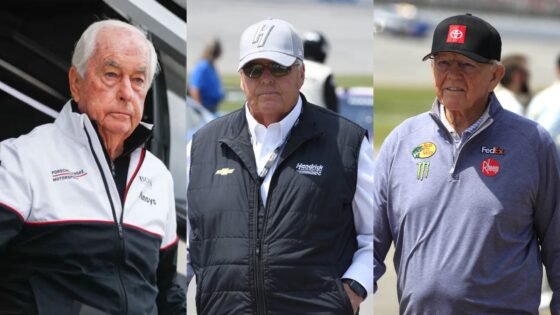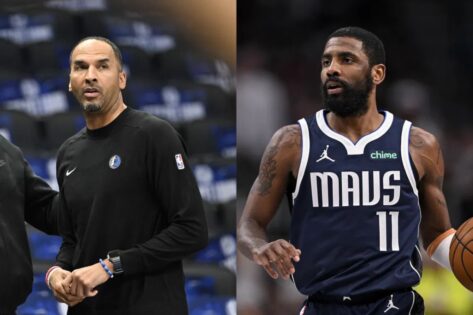Is a million-dollar prize enough to justify burning millions more? When NASCAR broke with tradition in 1992 at Charlotte Motor Speedway, something crazy happened. After a last-lap crash with Kyle Petty that evening, Davey Allison crossed the finish line sideways and unconscious in what became known as “One Hot Night.” The All-Star Race has evolved into a spectacle rather than merely a demonstration. A test site. A place where no one took their foot off the throttle, and the standard regulations did not apply. But fast-forward to 2025, the special event has turned into an experimental ground for the sport to sort out its racing product.
When the Next Gen car was having trouble performing at small tracks and fan interest was declining in 2025, NASCAR subtly presented its top teams with an audacious notion that recreated the spirit of that historic night. The assurance? An opportunity to change the playbook once more. Engineers haven’t had this level of creative freedom in years. It contained the same rebellious DNA that drove garage legends during the rebellious era of the sport, and it was discussed in whispered meetings and teased behind closed doors. Nevertheless, today’s garage didn’t exactly seize the opportunity the way Allison did in the past.
NASCAR’s boldest idea in years met with loud silence
To breathe new life into an event that many currently consider old, NASCAR proposed a “run what you brung” format for the 2025 All-Star Race at North Wilkesboro Speedway. The concept? Give teams a unique opportunity to develop by releasing them from the Next Gen rulebook’s strict technological constraints. However, when given this chance, teams from all different levels of competition reached the unexpected conclusion of a big No, thank you.
If anything, this was NASCAR’s invitation to the garage to come together and find the solution for the short-track package. Races at Bristol and Martinsville once hosted barn burners, but now it’s just track position and an execution race. Kyle Larson, who won the Food City 500, led 411 of 500 laps, and this goes to show you the problem the short-track package is facing with the Gen 7 car.
But before this ambitious project could be discussed publicly, the teams had already found a reason to hit a pause on this idea. NASCAR wasn’t going to finance this rules package or freedom run, the teams were the ones who were going to bear the cost of the parts and developing a new product. Apparently, these tweaks could’ve cost teams millions of dollars. As Denny Hamlin bluntly stated on his Actions Detrimental podcast, 23XI Racing’s preliminary estimates suggested they’d be down $2 million if they pursued the plan. “Everyone wants to go have fun, do all these things, but who is going to pay for it?” Hamlin asked.
For mid-tier and smaller teams, the stakes were even worse. Any effort to keep pace with the sport’s titans would be fiscally reckless. But there were other problems besides the money. The absence of long-term benefit was what deterred teams. Teams would not be allowed to carry over parts or setups, and any innovative ideas would not be allowed in races that paid points. It would be a one-night science experiment from a racing perspective, with no real-world use outside of the All-Star limelight. Well, the option tires didn’t last one whole year, so there’s enough incentive for the teams to stray away from this proposition.
NORTH WILKESBORO, NC – MAY 21: Kyle Larson 5 Hendrick Motorsports HendrickCars.com Chevrolet celebrates after winning the NASCAR, Motorsport, USA Cup Series All-Star Race on May 21, 2023 at North Wilkesboro Speedway in North Wilkesboro, NC. Photo by Jeff Robinson/Icon Sportswire AUTO: MAY 21 NASCAR Cup Series All-Star Race EDITORIAL USE ONLY Icon2305213445
In other words, why pour time and effort into a car setup that will be obsolete the moment the checkered flag drops? With NASCAR’s current rule restricting teams to just seven chassis, the decision became even more urgent. It felt like a risk with no reward to sacrifice one of them for a speculative build that could be destroyed in the sake of speed.
For the time being, the All-Star Race will follow a more recognizable format. However, the controversy it generated—about price, rivalry, and innovation—has already had an impact. Additionally, the “run what you brung” concept might make a comeback in a sport that is always looking for its next big innovation. Because radical ideas rarely go away in NASCAR. All they do is wait for the ideal time and price. While this idea didn’t see the daylight, NASCAR has brought out some major changes for the 2025 All-Star, which traditional fans would label as a gimmick or manufacturing chaos.
The Promotional Rule: Jeff Gluck Slammed It on The Teardown Podcast
“I just, I mean, to me it’s kinda stupid,” Jeff Gluck said on the podcast. Both insiders and fans are upset over NASCAR’s decision to implement a “promoter’s caution” during the All-Star Race. The rule was created to provide excitement to the race and permits Marcus Smith, CEO of Speedway Motorsports, to issue a yellow between laps 110 and 220. The rule’s reasoning was straightforward: a mandatory caution might cluster up the field, thereby enhancing drama and unpredictability and providing spectators with a more engaging show.
NASCAR’s new promoter’s caution rule was called out by Jeff Gluck as a gimmicky attempt to create excitement in a race that ought to be exciting on its own merits. He maintained that by emphasizing show over real competitiveness, NASCAR is losing sight of the purpose of the All-Star Race. The regulation follows the abandoned “run what you brung” concept, which teams turned down because of safety and economic concerns. Although the alterations are meant to improve entertainment, critics like Gluck believe they are temporary solutions that detract from the race’s original essence and ability to display genuine driving talent.
Adding fuel to the fire, Gluck also expressed concern over the potential for favoritism. “When you allow a promoter to throw a caution flag for whatever reason, you’re opening the door to accusations of manipulation,” he said. With $1 million on the line, there’s a potential that teams might string strategies to throw caution or wait for the right moment for the promoter caution to drop. Short track racing at Martinsville last year is the perfect example of how teams react when the stakes are high.
The post What Is NASCAR’s Controversial “Run What You Brung” Rule for the All-Star Race? And Why Are Teams Refusing to Follow It? appeared first on EssentiallySports.



